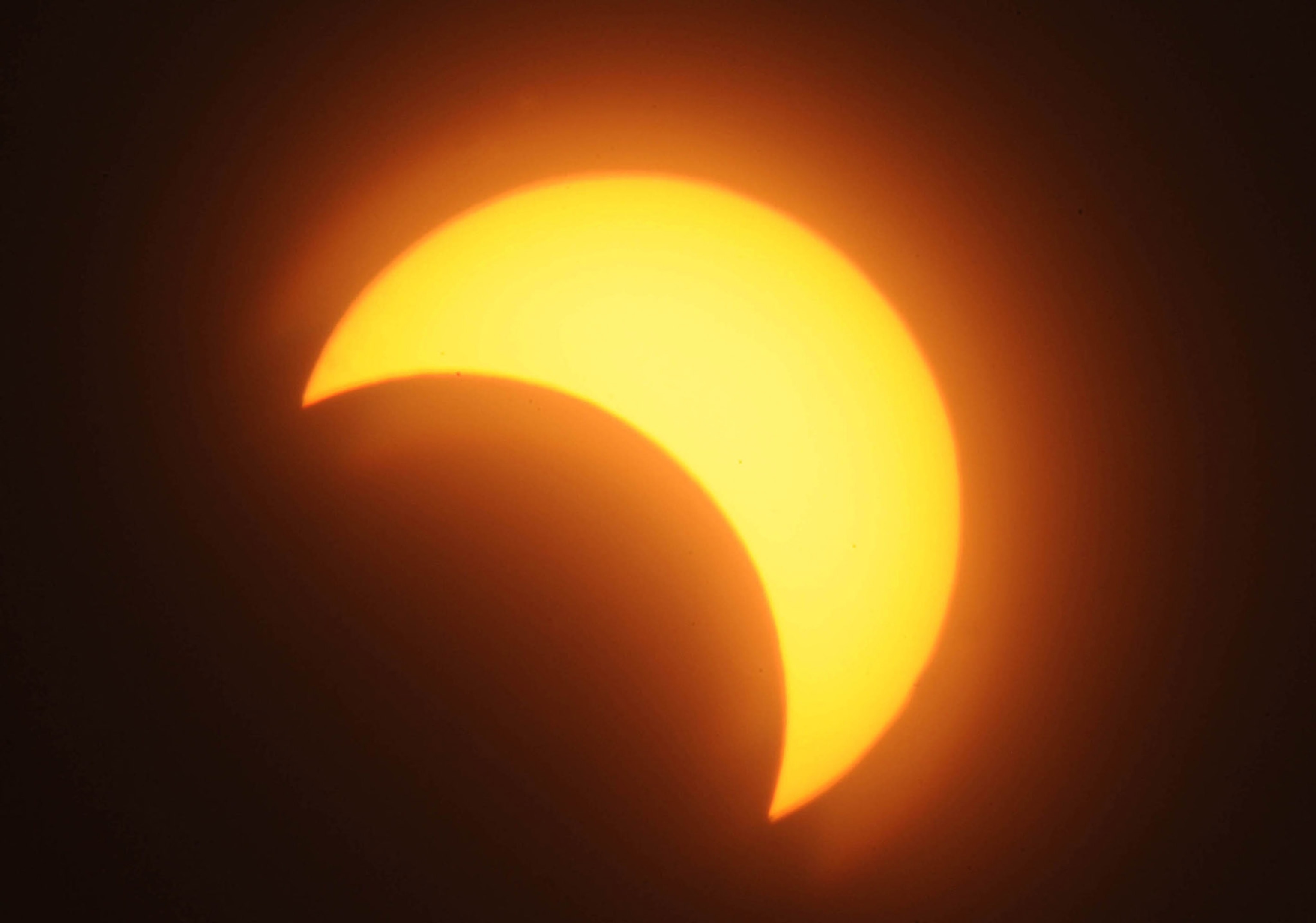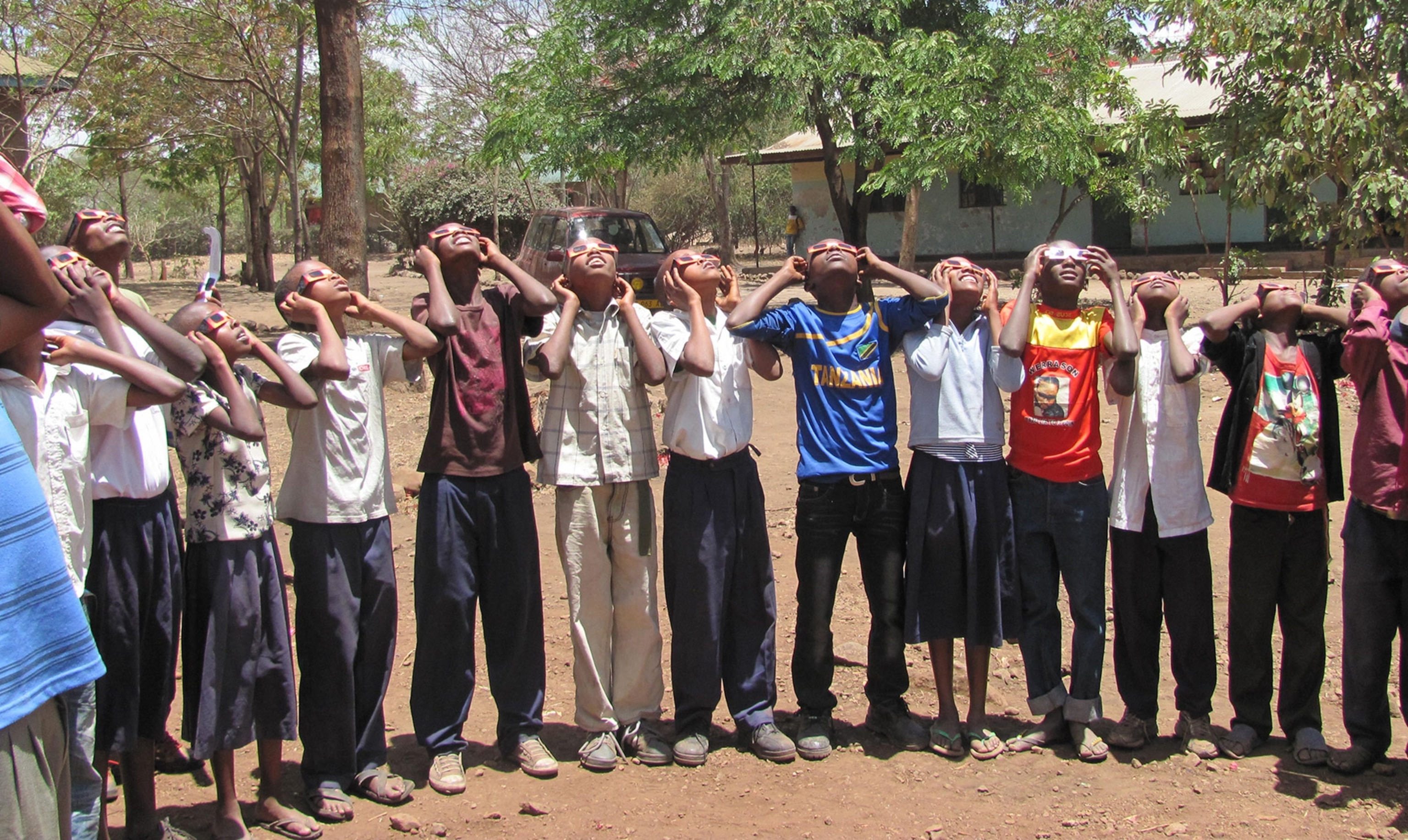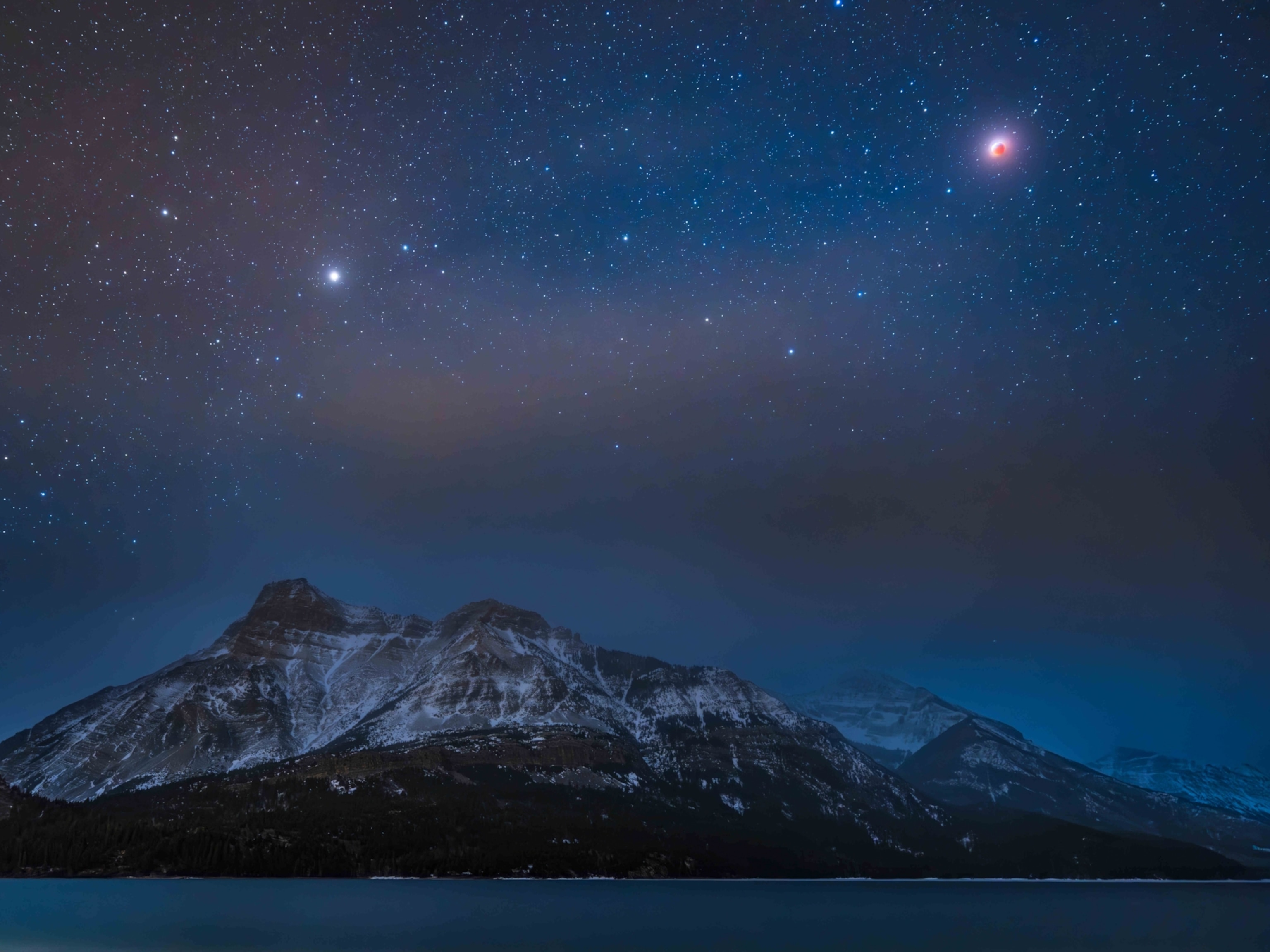
Help Send Eclipse Glasses to Kids in Africa
In three weeks, the sun will become a ring of fire and provide a natural lesson in astronomy.
On September 1, the shadow cast by a solar eclipse will sweep across parts of Africa—and if Astronomers Without Borders has anything to say about it, thousands of students will be able to safely watch the cosmic spectacle. Going by the motto “One People, One Sky,” the organization is hoping to send eclipse glasses to at least eight countries along the eclipse path.
“This is a spectacular and relatively rare event that almost everyone can take advantage of,” says Mike Simmons, founder of Astronomers Without Borders. “They have the eclipse, they have the [astronomy] educators, who are working with the teachers. But unless they get the glasses, there’s a missing piece.”
September’s eclipse won’t be total. It will be what’s known as an annular eclipse, when the moon’s position in the sky makes it a little bit too small to completely cover the sun’s face. Instead, an eerie glowing ring will surround the silhouetted moon, and shadows filtered through tree leaves will come in crescents.
Staring at that ring of solar fire is still unsafe without proper filters, and that’s where Astronomers Without Borders is hoping to help—with the big-time bonus of being able to explain the science behind the celestial light show.
“Seeing the practicality of this phenomenon makes the science stick,” says Olayinka Fagbemiro, who works with Nigeria’s National Space Research and Development Agency and will be helping distribute glasses in Abuja, the nation's capital city. “It also translates to so many other scientific occurrences, which most African communities explain with superstitions.”
The organization’s goal is to raise at least $37,000, which will buy 37,000 pairs of eclipse glasses. But it’s likely that won’t be nearly enough. For a total solar eclipse in 2013, Astronomers Without Borders did something similar in Africa and discovered that interest in seeing the phenomenon vastly exceeded the available glasses in some places.

“The last eclipse saw us using only 500 pairs for over 3,000 kids! It was really unbelievable, as we had so many parents bringing their kids to 'gate crash' the viewing centers,” Fagbemiro says, describing the chaos of cycling the available glasses through multiple viewing groups. “The kids were so excited, we just couldn’t send any of them back … the excitement on their faces was contagious.”
(She’s not kidding. Look at these faces! Seriously. Go. I’ll wait.)
The skies over Africa are often a perfect laboratory for teaching astronomy, especially in the evening, when rural areas are gifted with dark, unpolluted views of the stars. But eclipses offer a rare chance for everyone—even those in cities—to learn a little bit about the science of the sky. And that’s invaluable in parts of the world where science education is relatively scarce, says Ryan Lemon, a Peace Corps volunteer who teaches physics in rural Tanzania.
“Our school has one laboratory that we use for the practical side of things,” he says. “The materials are few and far between, but luckily for me, physics is in everything around us.”
When Lemon found out about the campaign, he asked Astronomers Without Borders if he could participate. The 400 students at his school in the Rukwa region, near Lake Tanganyika, are mostly between the ages of 12 and 17, and many have never left their village to visit the nearest town.
“If my students can get these glasses, it would be like the laboratory and the field trip have been brought to our backyard,” he wrote in a letter to the organization. “It’s so rare that an experience like an eclipse will be visible from your school … they have the chance to experience a real application of the physics they learn in the classroom, on a monumental scale.”
If all goes well, Lemon and hundreds of his students will be gazing at the sky on September 1, watching as the moon carves the sun into a shimmering crescent and performs one of the grandest demonstrations of celestial physics.
Follow Nadia Drake on Twitter.





